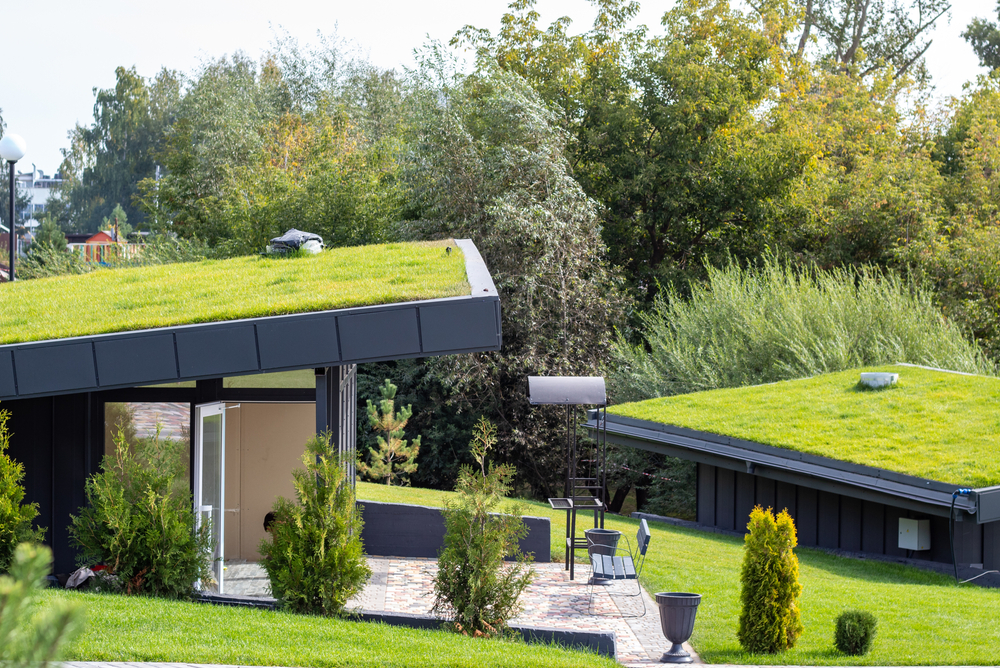Green roofs, a millennia-old notion, have grown from ancient customs into modern marvels of sustainable construction. These living roofs, which combine plants and shelter, have a rich history that inspires architectural creativity even now.
Green roofs at the roots: from ancient practices to modern marvels
Green roofs are not a new invention; they have existed since humanity’s earliest shelters. Caves with sod roofs planted with flora served ceremonial and agricultural use millennia ago.
The ancient Hanging Gardens of Babylon had one of history’s most striking green roofs. These amazing raised gardens were acclaimed as one of the wonders of the ancient world, displaying an early manifestation of a green roof. In contrast to modern technology, the engineering used arched stones, waterproof reeds, and thick tar to construct these stunning gardens.
Modern green roof tech: An environmental revival
Traditional roofing materials such as iron sheets and tiles gained popularity as industrialization transformed construction techniques. However, environmental degradation triggered a paradigm change. The need of conserving green places for human survival was recognized around the world. This revelation sparked renewed interest in green roofs.
One of the main issues with green roofs was roof ingress (leaks). To address this, Germany pioneered current green roofing technology in the 1960s. German tech gained traction, igniting a global movement in sustainable building. The green roofs market expands with each passing year, with the United States leading the way. Research forecasts an amazing increase in the global green roofs market for this year (17.7 percent from $1.53 billion in 2022 to 1.80 billion), highlighting society’s rising dedication to environmentally responsible building solutions. By 2027, the market is expected to reach an impressive $3.31 billion.
Green Roof types, installation, and benefits
The green roofs of today represent a sophisticated synergy between architecture and nature. Understanding their many forms and installation procedures is essential for reaping their benefits. Roofs are divided into two categories: extensive and intensive. Extensive roofs have shallow soil depths and few layers, whereas intensive roofs have deep soil profiles and a wide variety of plant life.
Drainage systems, economic implications, and maintenance are all considerations to consider during the installation process. Water damage and root penetration are prevented by special membranes, while drainage layers enable efficient water management. From sedum to chives, a variety of flora options contribute to the roof’s ecological impact and visual appeal.
Green roofs have numerous advantages, ranging from improving architectural design to helping the environment. They offer a perfect combination of nature and urban living, with aesthetic and functional benefits that considerably outweigh standard roofing solutions. Green roofs contribute to a sustainable future in a variety of ways, including creating a microclimate, lowering cooling costs, and supporting wildlife habitats.
Is a green roof right for you?
Green roofs have unquestionable advantages, but they are not without obstacles. The initial cost can be significant, and the added weight they bring to structures necessitates careful planning of foundations and walls. Location and long-term commitment are other important considerations. Green roofs may provide cooling in warm climates but may require additional heating in colder climates. When deciding if a green roof is the correct decision for your home, it’s critical to weigh these concerns against the countless benefits.
Green roofs are a union of history and innovation, elegantly combining ancient practices with modern technology. Green roofs are a tribute to our ability to build harmonious spaces that benefit both people and the world as society prioritizes sustainable living.











